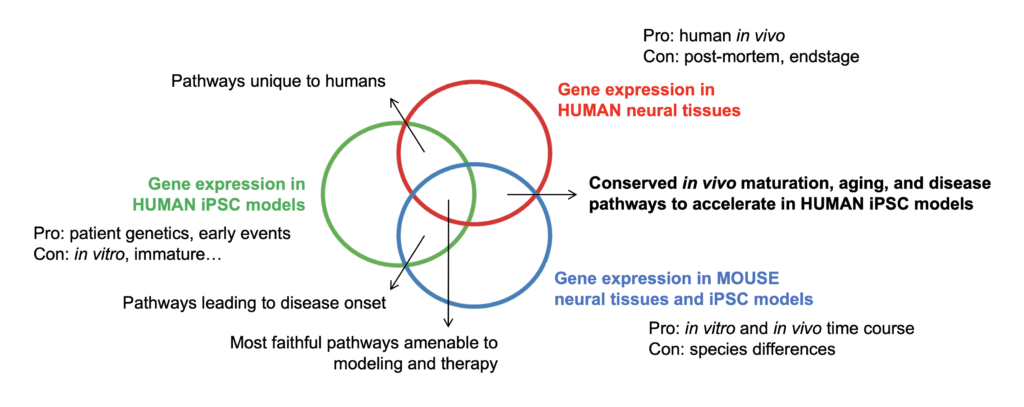Induced pluripotent stem cells (iPSCs) applied to disease modeling and personalized therapies
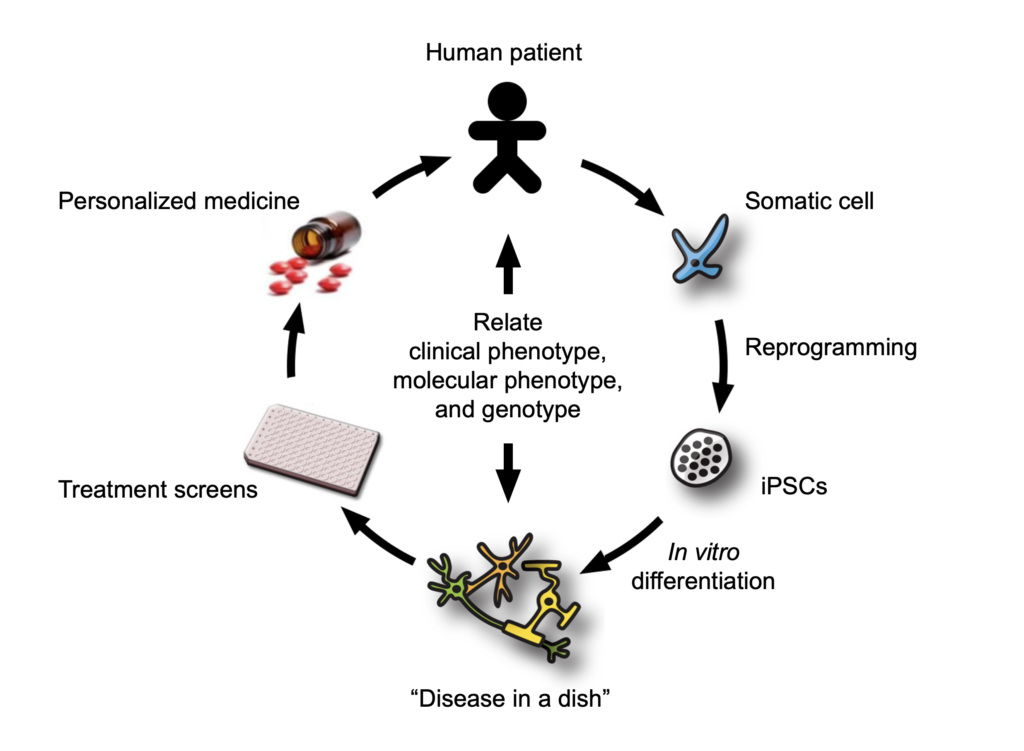
Mapping the intersection of tissue and cell type-specific signatures of maturation and aging to neurodegeneration
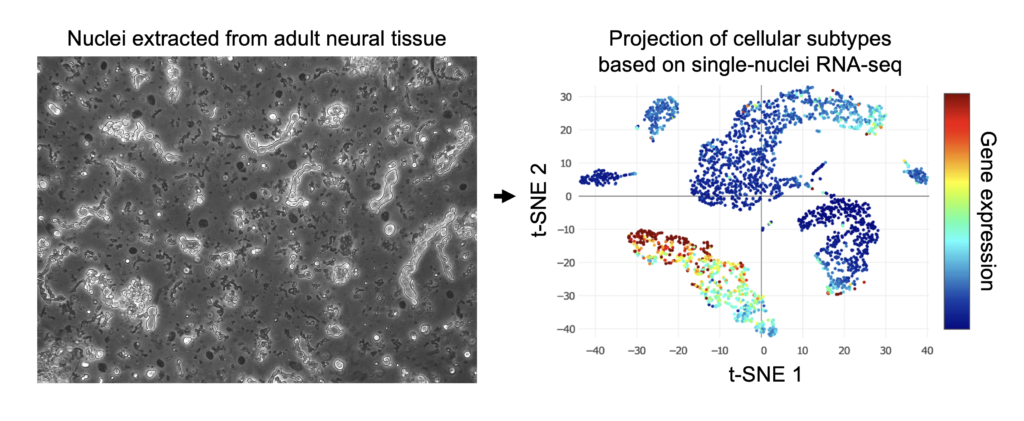
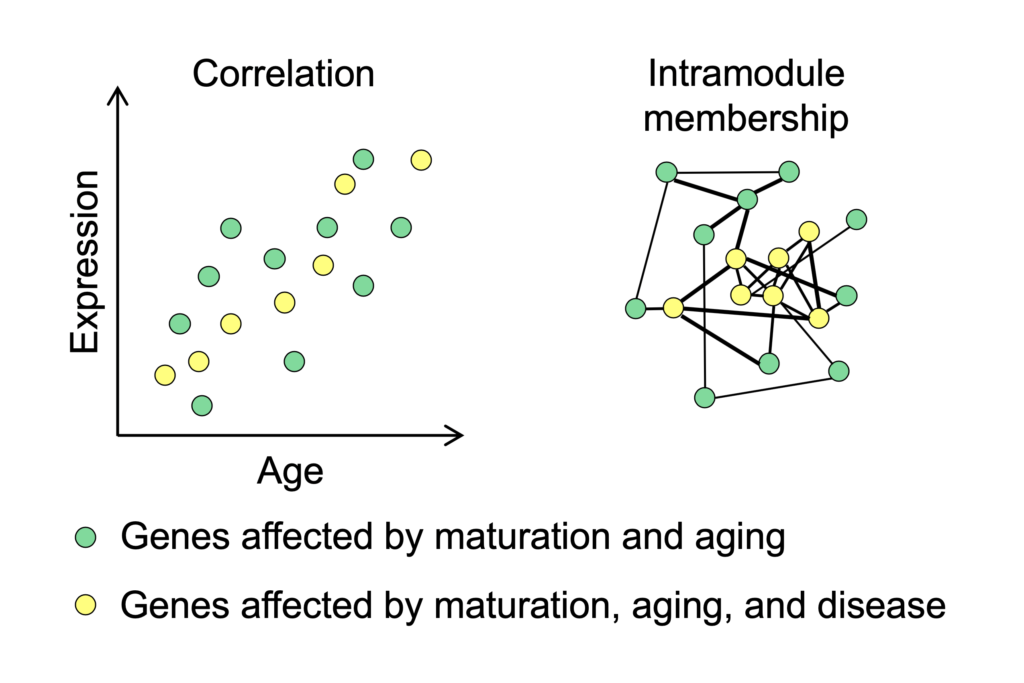
Can in vitro iPSC models faithfully reflect in vivo development, maturation, and aging? We first need to define the molecular signatures of mature and aged tissues and cell types, and which of those signatures are affected in the relevant late-onset diseases that afflict those tissues and cells. Our previous work explored this for ALS. This can establish a roadmap to a target gene expression program, and we can test if our cultures of stem cell derived tissues can traverse that path. If this is achievable, then our stem cell model can assume a physiological state that better reflects the conditions occurring in the adult body, where late-onset diseases manifest.
Delineate gene expression networks conserved or divergent across human and rodent species
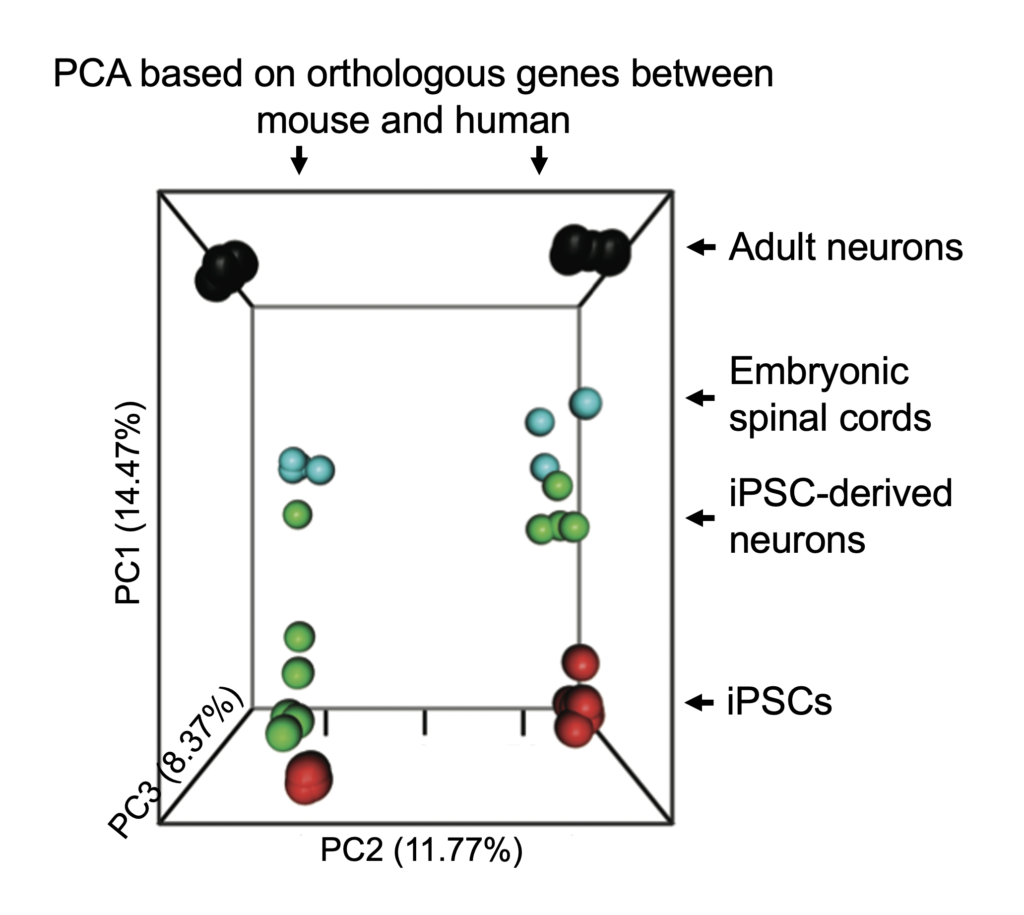
Animal models have been powerful tools to aid our understanding and treatments of many human diseases, but they are also limited by inherent genetic differences across species. We aim to resolve both the commonalities as well as differences in gene expression programs among widely used mouse models and human systems. These efforts can inform the design of pre-clinical studies and promote successful translation towards clinical pipelines. Also, these investigations will ultimately minimize the number of animals necessary for future research. What is more, as mice enact maturation and aging pathways on a time scale shorter than humans, conserved pathways can potentially be accelerated in human iPSC models.
Engineer strategies to accelerate maturation, aging, and late-onset disease in all models
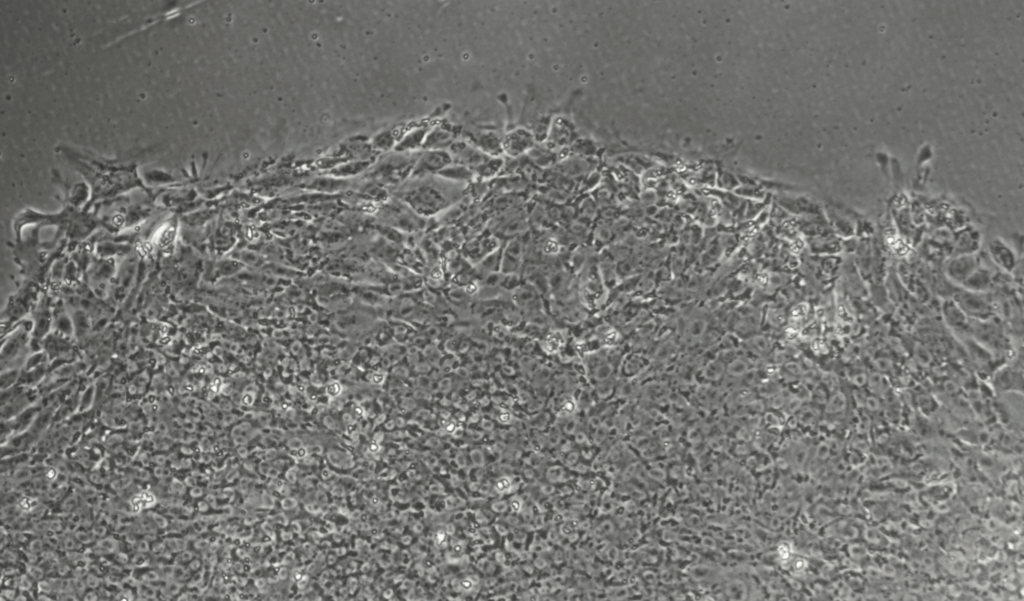
The current framework of the Ho Lab is to leverage gene expression programs across three complementary model systems (stem cells, animal, and human tissues) to track the origins of late onset disease. The ability to interrogate the fundamental mechanisms that drive development, maturation, aging, and disease can help realize our forward vision of personalized, predictive, and preventive medicine.
